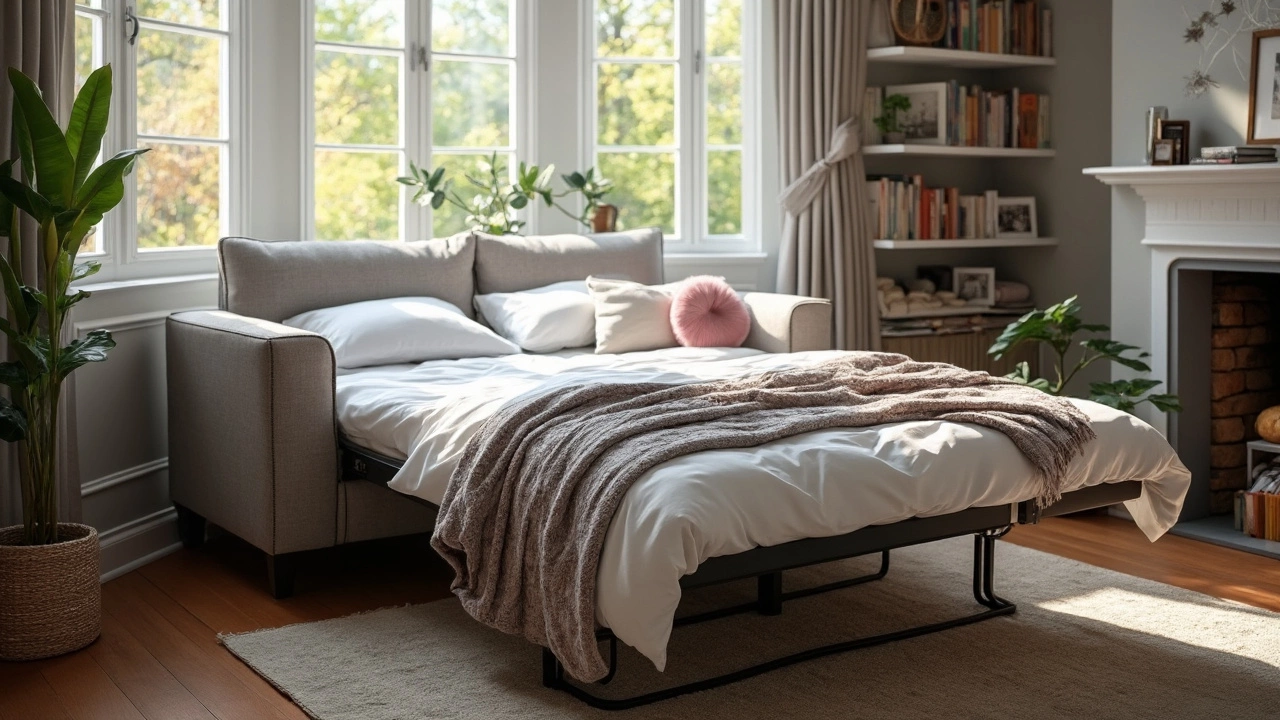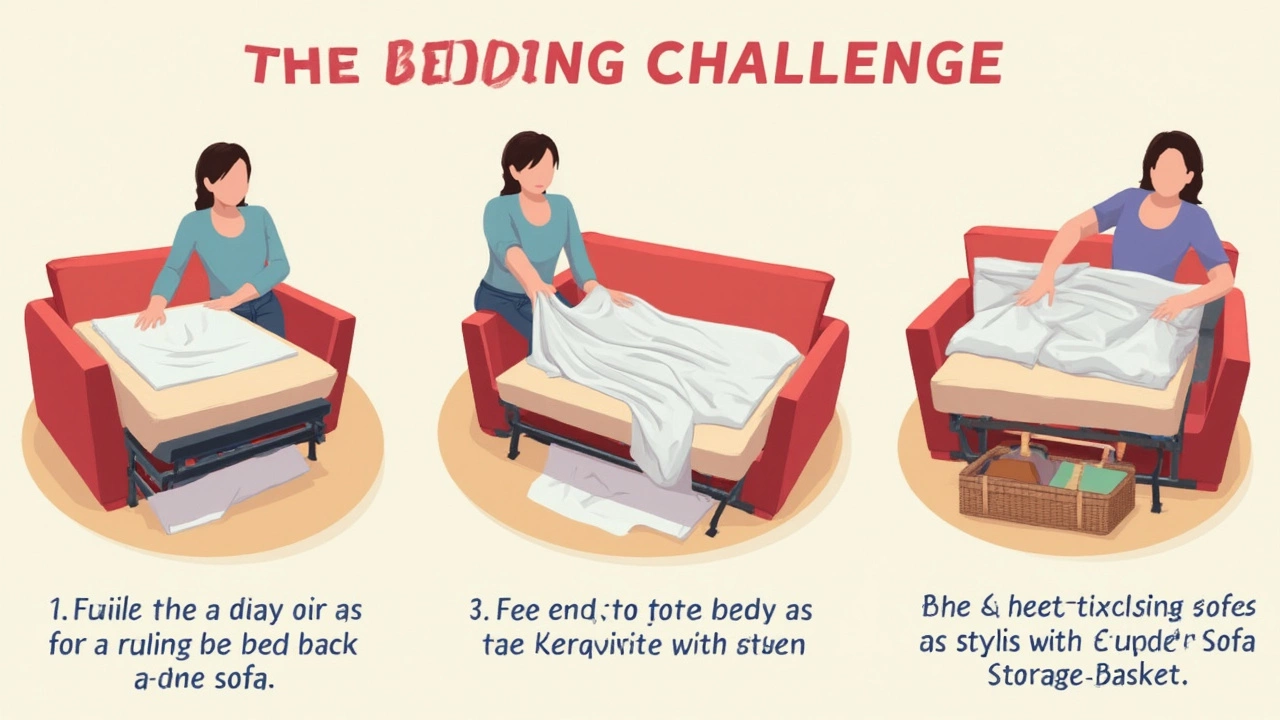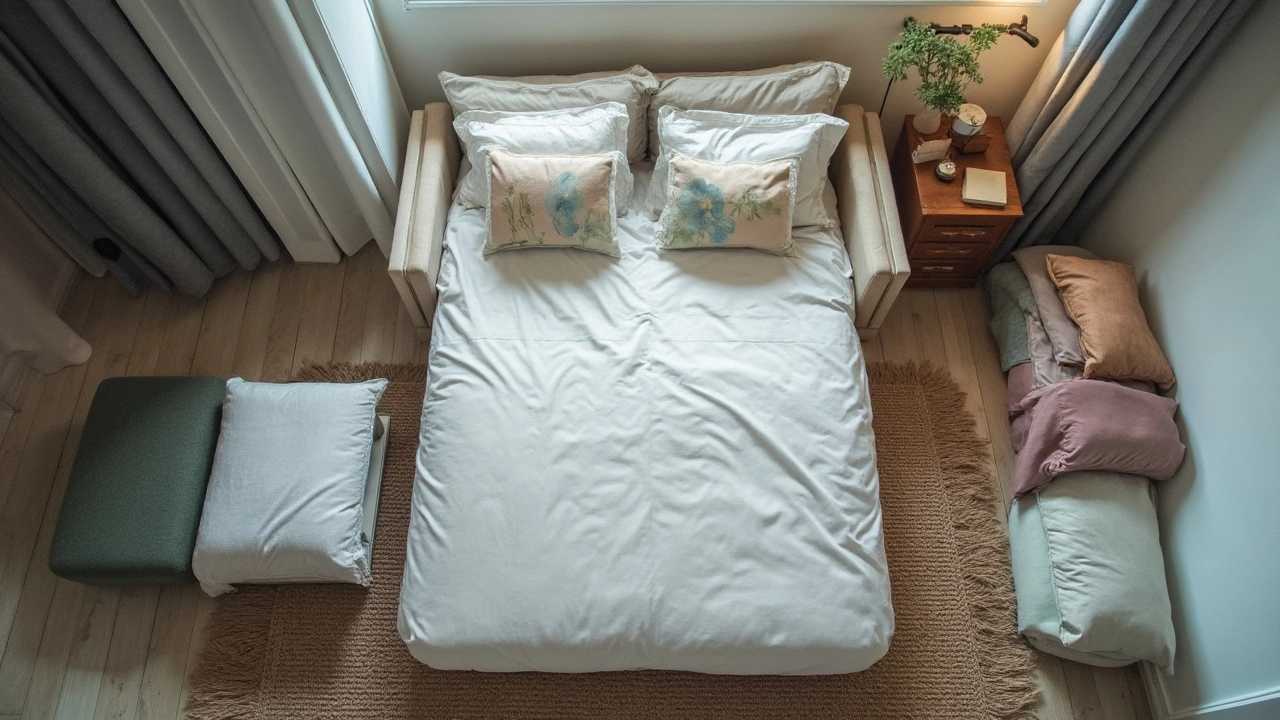
It’s late, your guest is yawning, and you’re eyeing that sofa bed, wondering if you really need to strip it clean or if you can just fold it up with the sheets left right where they are. After all, who hasn’t debated this at least once? That seemingly minor call could mean the difference between an easy bedtime routine and a wrestling match with an unruly mattress and tangled linen.
Here’s a truth bomb: most people try to leave the sheets on their sofa beds for convenience. It just seems easier, right? Pop the bed open, welcome your guest (or sneak in yourself for a nap), and skip the fuss of making the bed every time. But there’s more under the surface than you’d think. When most sofa beds fold, the mattress bends pretty sharply—sometimes almost in half. Now, if you’re leaving sheets (especially a fitted sheet), they can wrinkle, bunch up, or even pop right off. Plus, the beds themselves are often on the thinner side, so your perfectly tucked sheet gets pulled and pinched in ways a regular bed never would.
Some sofa beds, especially the newer ones, actually account for the extra bulk of sheets and a thin blanket, but plenty don’t. Ever tried jamming a mattress into a space that’s a smidge too small, all because of an innocent bedsheet? You’ll hear that clunk and maybe even see the mechanism start to strain. In some cases, if you keep repeating this, you’re slowly pushing the hinges and frame under extra pressure—so you might be shaving years off your sofa bed’s life without even realizing it. Quick tip? If you value the investment in your fold-out couch, know if it’s the type that can handle made-up bedding or if it’s best left stripped before folding.
Let’s talk hygiene, too. Leaving moist or less-than-totally-dry sheets trapped inside a folded sofa bed is like an open invite to mildew, especially if you live somewhere humid. It’s stealthy—you might not even notice unless you get a whiff of musty fabric after a few days. Cleanliness seems dull, but skipping the wash cycle and tossing unwashed sheets inside a folded mattress can actually shorten both your linen’s life and the comfort of your sofa bed.
Manufacturers actually split on advice here. Some brands, like IKEA or American Leather, design certain models to let you leave on a fitted sheet and a very lightweight blanket while folding, but it’s rarely meant for thick quilts or heavy bedding. Others insist you always remove everything. When in doubt? Check that little tag on the frame or dig up the manual you (might) still have tucked away somewhere—or just do a quick search on the model. No shame in playing it safe.

This seems like one of those “why not?” things, but hang on. There are definite upsides to keeping the sheets on—less time spent fussing, fewer midnight bed-making struggles, and an easier daily reset if you use your sofa bed often as a sleeper. Repeatedly pulling off and putting on sheets can stretch out your bedding, especially fitted sheets, so you might actually be adding wear and tear by doing all that extra work. With kids, pets, or frequent guests, the convenience factor alone is tempting.
However, the flip side isn’t as easy to ignore. If your sheets get wedged awkwardly or tangled in the frame, you risk permanent creases, busted seams, or the dreaded stuck mechanism. There’s nothing like trying to open your sofa bed only to find it jammed halfway with knotted fabric in the gears. Some sofa bed users also warn about “sheet ghosts”—pieces of fabric you find balled up at the bottom after opening up the bed. Plus, with bulkier mattress toppers or thick comforters, you’re basically daring the frame to stay closed, which isn’t a good long-term habit.
Another issue? Sagging. Older or cheaper sofa beds sometimes don’t have enough tension to spring back after years of folding with bedding trapped inside. That’s why you’ll see saggy mattresses, creased cushions, and weird dips where the sheets settle into the fold marks. If you’re using especially high-thread-count sheets or bamboo bedding, keep in mind: delicate fabrics hate tight folds and sharp corners. So you might need to weigh comfort and convenience against the long-term look and feel of your sofa bed. A little care goes a long way here.
One thing folks rarely talk about: if you have allergies, leaving bedding on the sofa bed can trap dust, pet hair, or pollen in the fold for days or weeks at a time. You might think you’re saving time, but all you’re doing is stashing away those allergens in the dark “cave” of the folded frame. Ever wondered why you sneeze extra in the guest room? Could be your hidden sheets at work.

If you’re determined to leave sheets on your sofa bed, you’re not alone. But you’ll want to work with your bed, not against it. First, go for thin, lightweight sheets—think microfiber or thin cotton blends. Heavy flannel or those deep-pocket fitted sheets for mega mattresses? Those never fold in gracefully. Flat sheets are your friend if you just want a layer between you and the mattress—easier on, easier off, and less likely to bunch.
Only use one layer, maybe two if you know your sofa bed can handle it. Anything bulkier, and you risk that awkward lump when you close the bed. If you have to use a topper for extra comfort, try folding it separately and storing in an ottoman or closet instead of squishing it into the frame. Keep blankets and duvets folded up elsewhere—bring them out only when it’s sleep time.
Want to avoid mildew or stale smells? Always make sure sheets are dry—seriously dry—before tucking them into the sofa bed. Even a tiny bit of moisture lingers and becomes an odor trap. A quick trick? Add a dryer sheet or a fabric refresher pouch when you close up the bed. Some people swear by placing a small sachet of baking soda under the mattress, too, but nothing beats fresh, laundered linen.
If you’ve got a sofa bed you use a lot, consider sheets with reinforced corners or ties. A lot of bedding labels now mention if the sheets are designed for fold-out or adjustable beds. Reinforced stitching or flexible, grippy bands at the edges make a world of difference for keeping sheets in place even after multiple foldings—less wrestling, less slippage.
When it comes to cleaning, wash sofa bed sheets at least as often as regular bed sheets—maybe more if pets or guests are in the mix. Don’t skip the deep cleans: vacuum under the cushions, look for crumbs (the sofa bed is basically a snack magnet), and if you have a metal frame, check and oil hinges every few months. Crumbs, dust, and stiff joints can make a five-second fold into a five-minute struggle.
If you’re buying a new sofa bed and you want ultimate convenience, ask the salesperson straight up: “Can I leave sheets on this when I fold it?” Newer designs, especially European models or high-end ones like La-Z-Boy or Joybird, often have specs for bedding clearance. If a brand says yes, you’re golden. If not, find out how quick the sheet removal process is, and if it’s a pain, consider a model-change or rethink your bedding strategy. Your future self will thank you during those late-night emergency sleepovers.
Final tip? If you enjoy the feel of a made bed but hate the fuss, tuck extra blankets or a comforter in an easy-to-grab basket near the sofa bed. That way, setup takes 30 seconds max. The more you tailor your setup to your routine, the less headache you’ll have—because, honestly, the last thing you want at midnight is a wrestling match with sheets and hinges before you finally crash. Your sofa bed works best when you play to its strengths, not its frustrations. And always remember—sofa bed sheets don’t have to be an ongoing battle if you find what fits your space and style.
Write a comment